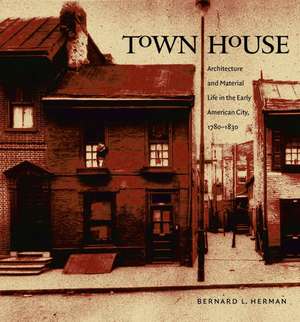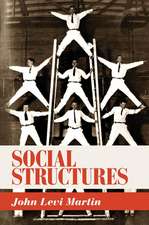Town House: Published for the Omohundro Institute of Early American Hist
Autor Bernard L. Hermanen Limba Engleză Paperback
Din seria Published for the Omohundro Institute of Early American Hist
-
 Preț: 351.11 lei
Preț: 351.11 lei - 27%
 Preț: 1990.99 lei
Preț: 1990.99 lei -
 Preț: 341.86 lei
Preț: 341.86 lei -
 Preț: 472.89 lei
Preț: 472.89 lei -
 Preț: 279.34 lei
Preț: 279.34 lei -
 Preț: 372.46 lei
Preț: 372.46 lei - 15%
 Preț: 485.48 lei
Preț: 485.48 lei -
 Preț: 413.83 lei
Preț: 413.83 lei -
 Preț: 240.65 lei
Preț: 240.65 lei -
 Preț: 432.77 lei
Preț: 432.77 lei -
 Preț: 345.89 lei
Preț: 345.89 lei -
 Preț: 396.68 lei
Preț: 396.68 lei -
 Preț: 313.45 lei
Preț: 313.45 lei -
 Preț: 346.88 lei
Preț: 346.88 lei -
 Preț: 394.77 lei
Preț: 394.77 lei -
 Preț: 313.45 lei
Preț: 313.45 lei -
 Preț: 348.61 lei
Preț: 348.61 lei -
 Preț: 317.31 lei
Preț: 317.31 lei -
 Preț: 305.77 lei
Preț: 305.77 lei -
 Preț: 214.31 lei
Preț: 214.31 lei -
 Preț: 269.62 lei
Preț: 269.62 lei -
 Preț: 349.17 lei
Preț: 349.17 lei -
 Preț: 315.79 lei
Preț: 315.79 lei -
 Preț: 362.49 lei
Preț: 362.49 lei -
 Preț: 359.23 lei
Preț: 359.23 lei -
 Preț: 488.18 lei
Preț: 488.18 lei -
 Preț: 308.07 lei
Preț: 308.07 lei -
 Preț: 403.21 lei
Preț: 403.21 lei -
 Preț: 345.50 lei
Preț: 345.50 lei -
 Preț: 305.57 lei
Preț: 305.57 lei -
 Preț: 335.82 lei
Preț: 335.82 lei -
 Preț: 308.66 lei
Preț: 308.66 lei -
 Preț: 306.16 lei
Preț: 306.16 lei -
 Preț: 267.51 lei
Preț: 267.51 lei -
 Preț: 345.72 lei
Preț: 345.72 lei -
 Preț: 307.89 lei
Preț: 307.89 lei -
 Preț: 309.41 lei
Preț: 309.41 lei -
 Preț: 330.81 lei
Preț: 330.81 lei -
 Preț: 268.30 lei
Preț: 268.30 lei -
 Preț: 395.31 lei
Preț: 395.31 lei -
 Preț: 468.65 lei
Preț: 468.65 lei -
 Preț: 310.02 lei
Preț: 310.02 lei -
 Preț: 399.57 lei
Preț: 399.57 lei -
 Preț: 308.66 lei
Preț: 308.66 lei -
 Preț: 402.83 lei
Preț: 402.83 lei -
 Preț: 246.76 lei
Preț: 246.76 lei -
 Preț: 303.27 lei
Preț: 303.27 lei -
 Preț: 335.82 lei
Preț: 335.82 lei -
 Preț: 315.96 lei
Preț: 315.96 lei
Preț: 241.42 lei
Nou
Puncte Express: 362
Preț estimativ în valută:
46.21€ • 50.21$ • 38.84£
46.21€ • 50.21$ • 38.84£
Carte tipărită la comandă
Livrare economică 21 aprilie-05 mai
Preluare comenzi: 021 569.72.76
Specificații
ISBN-13: 9781469633527
ISBN-10: 1469633523
Pagini: 320
Dimensiuni: 216 x 229 x 17 mm
Greutate: 0.6 kg
Seria Published for the Omohundro Institute of Early American Hist
ISBN-10: 1469633523
Pagini: 320
Dimensiuni: 216 x 229 x 17 mm
Greutate: 0.6 kg
Seria Published for the Omohundro Institute of Early American Hist
Notă biografică
Bernard L. Herman is Edward F. and Elizabeth Goodman Rosenberg Professor of Art History at the University of Delaware. He is author of three previous books, including Architecture and Rural Life in Central Delaware, 1700-1900; The Stolen House; and, with Gabrielle M. Lanier, Everyday Architecture of the Mid-Atlantic: Looking at Buildings and Landscapes.









